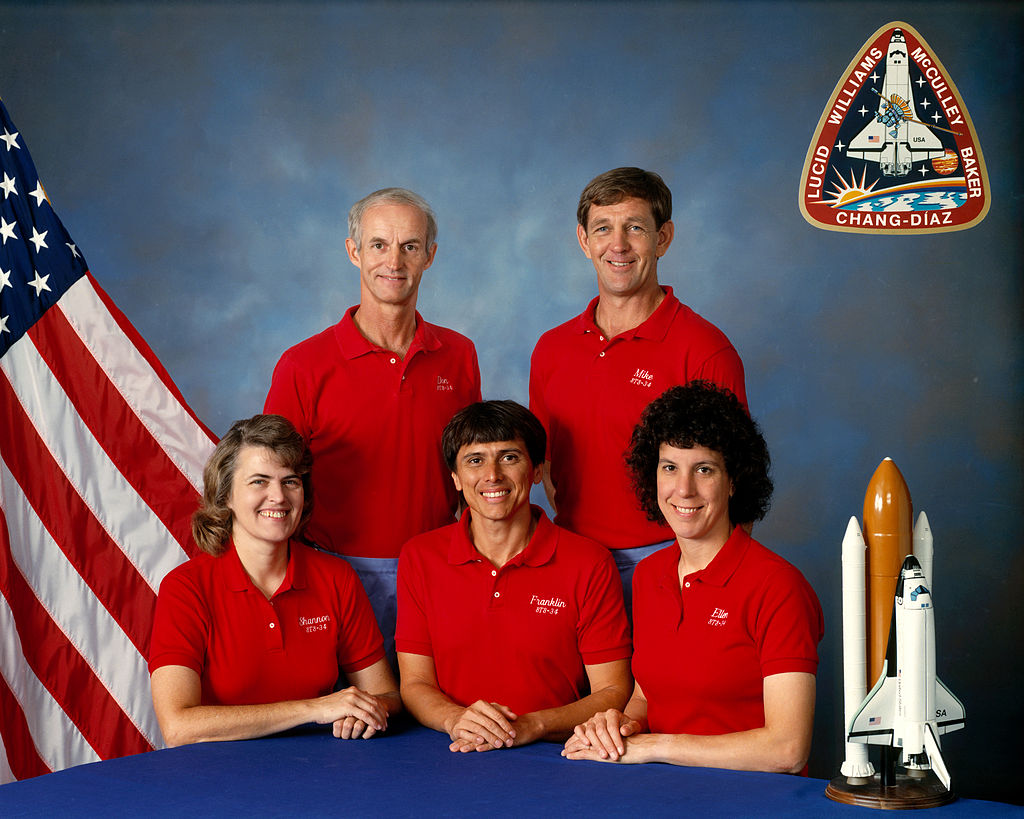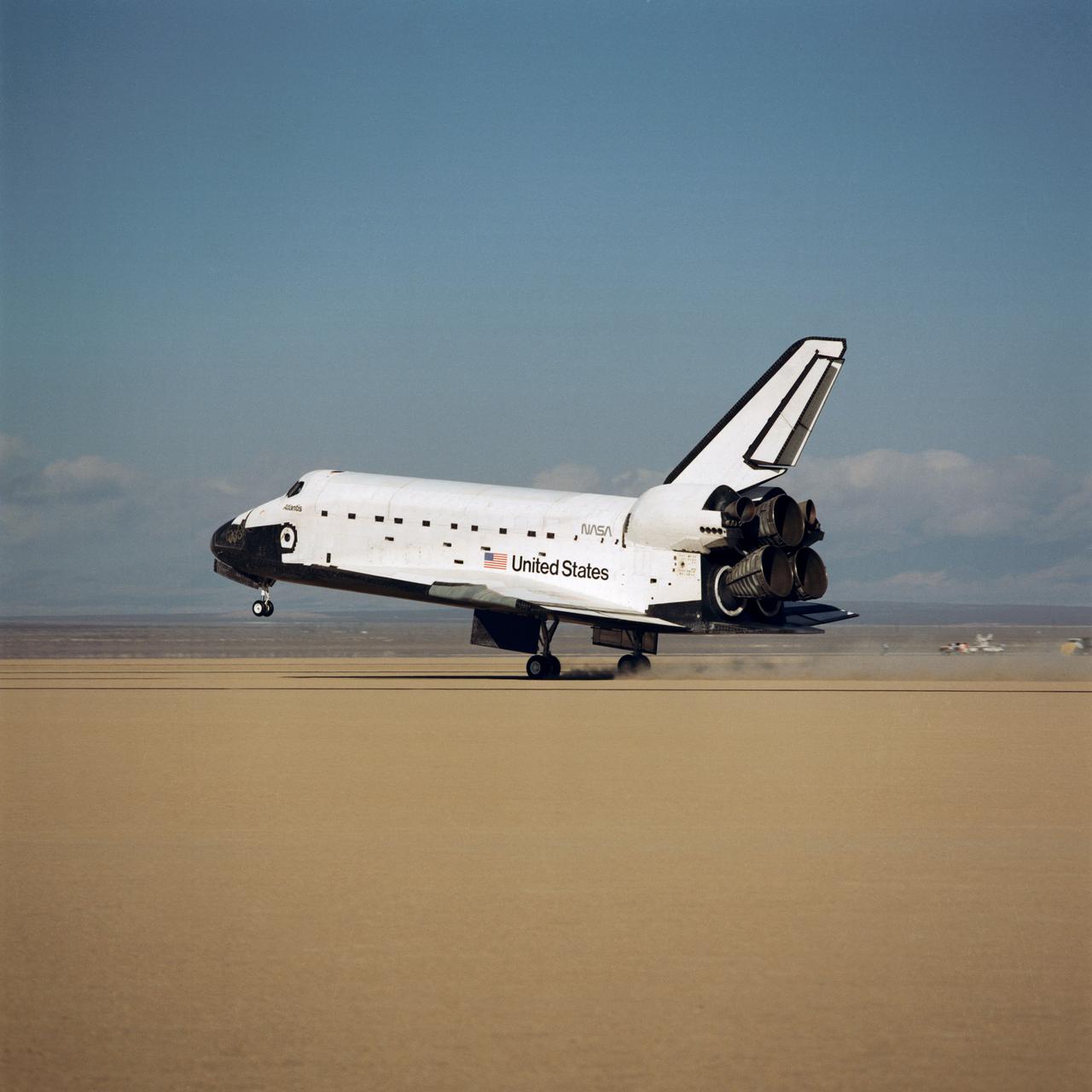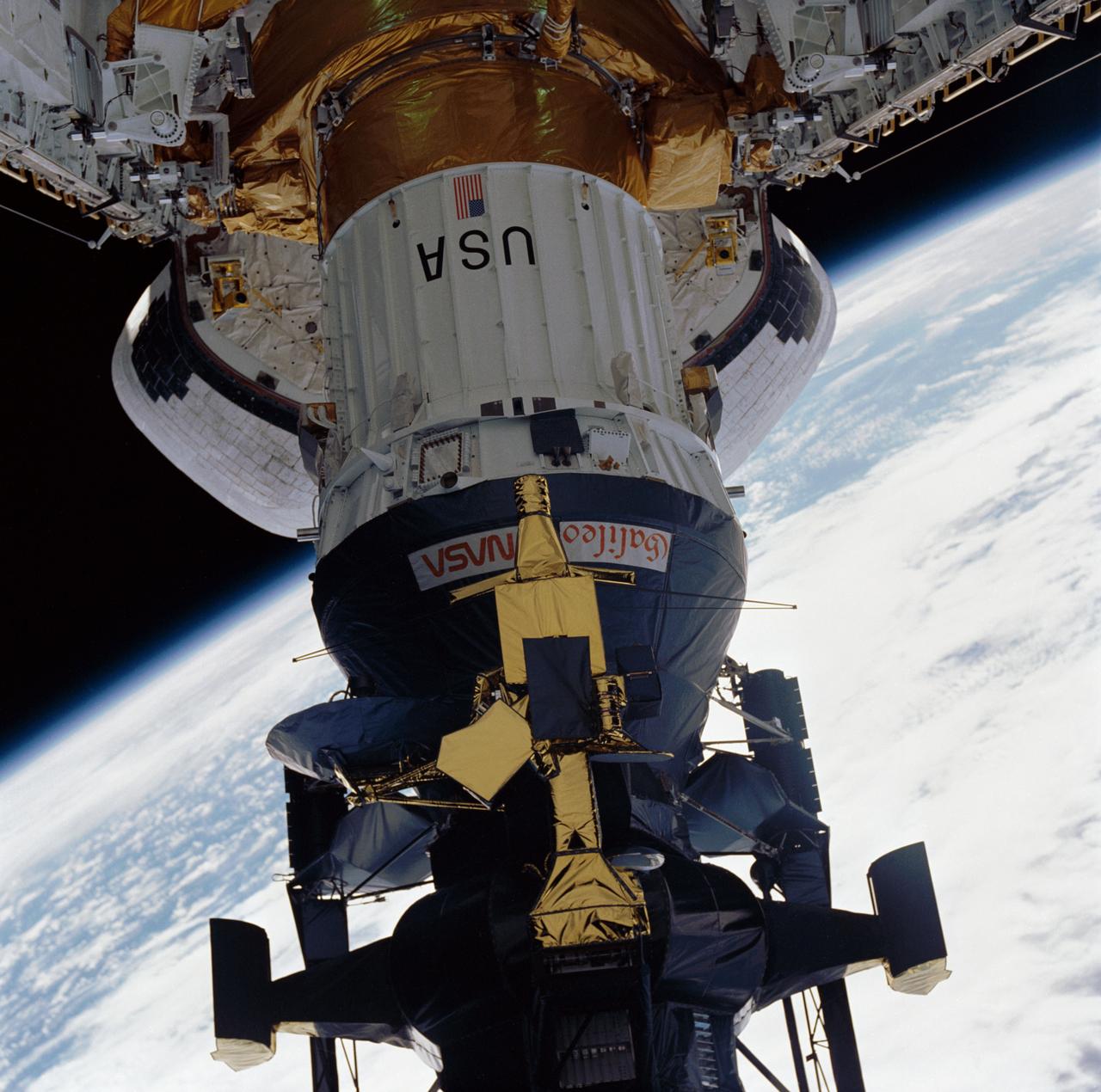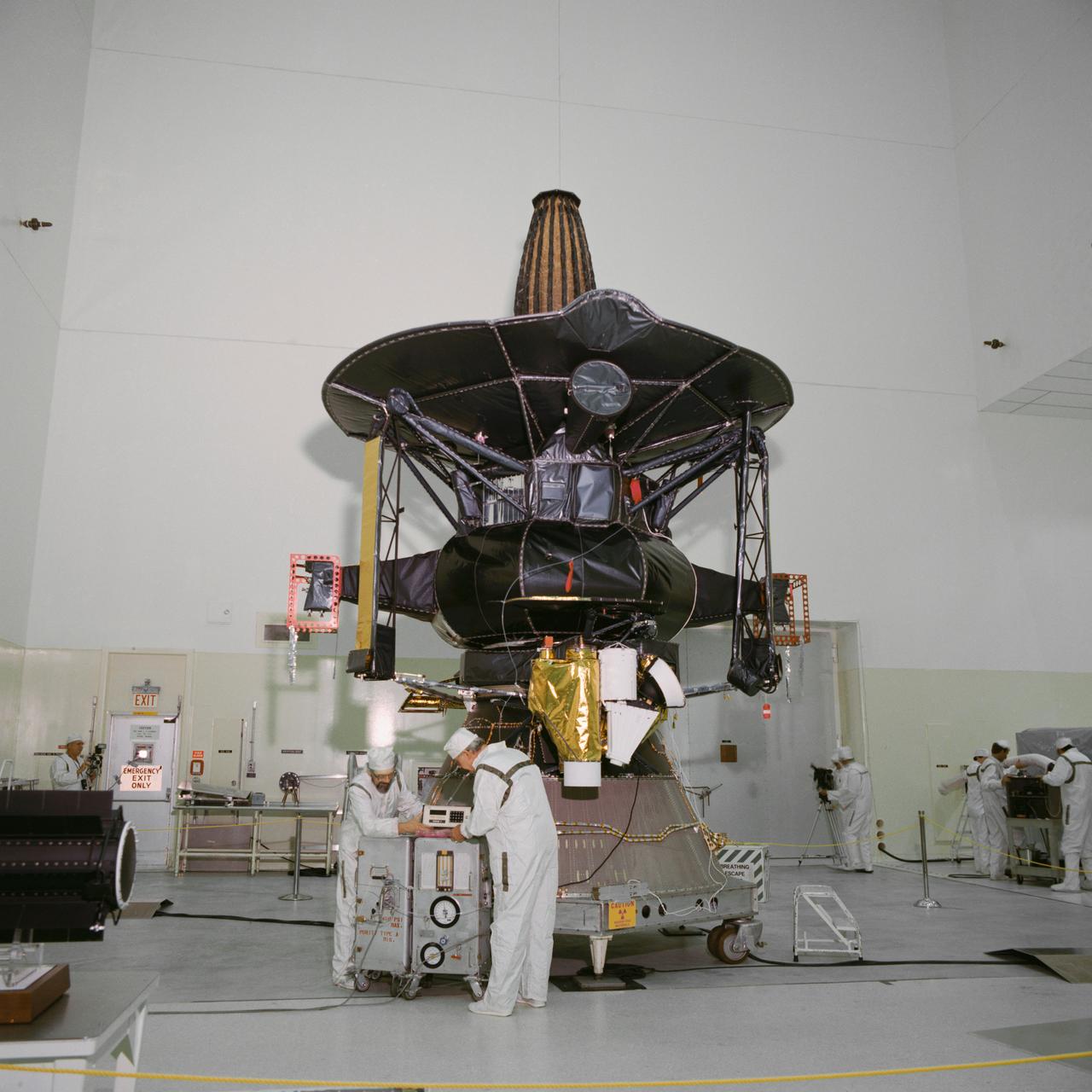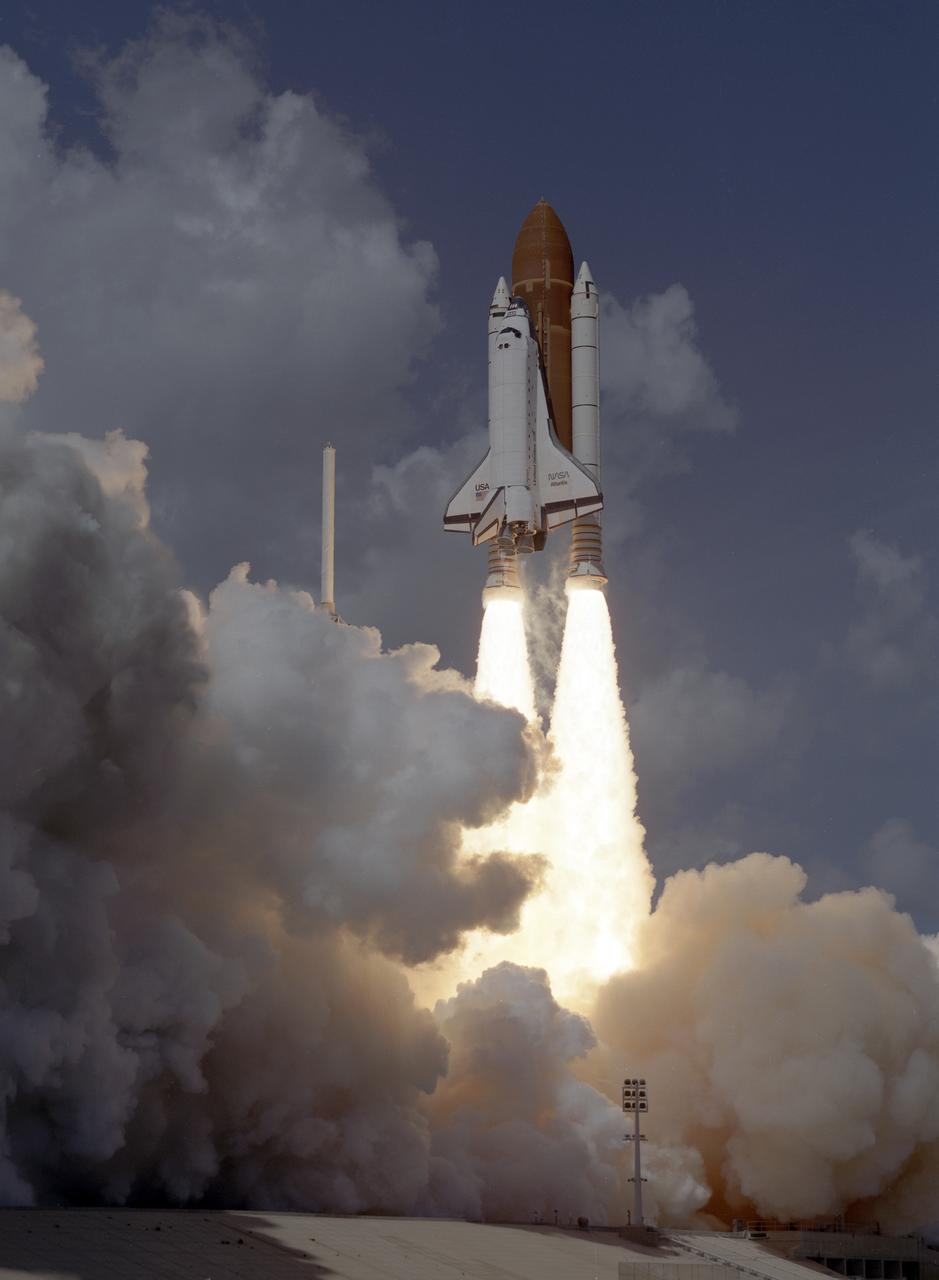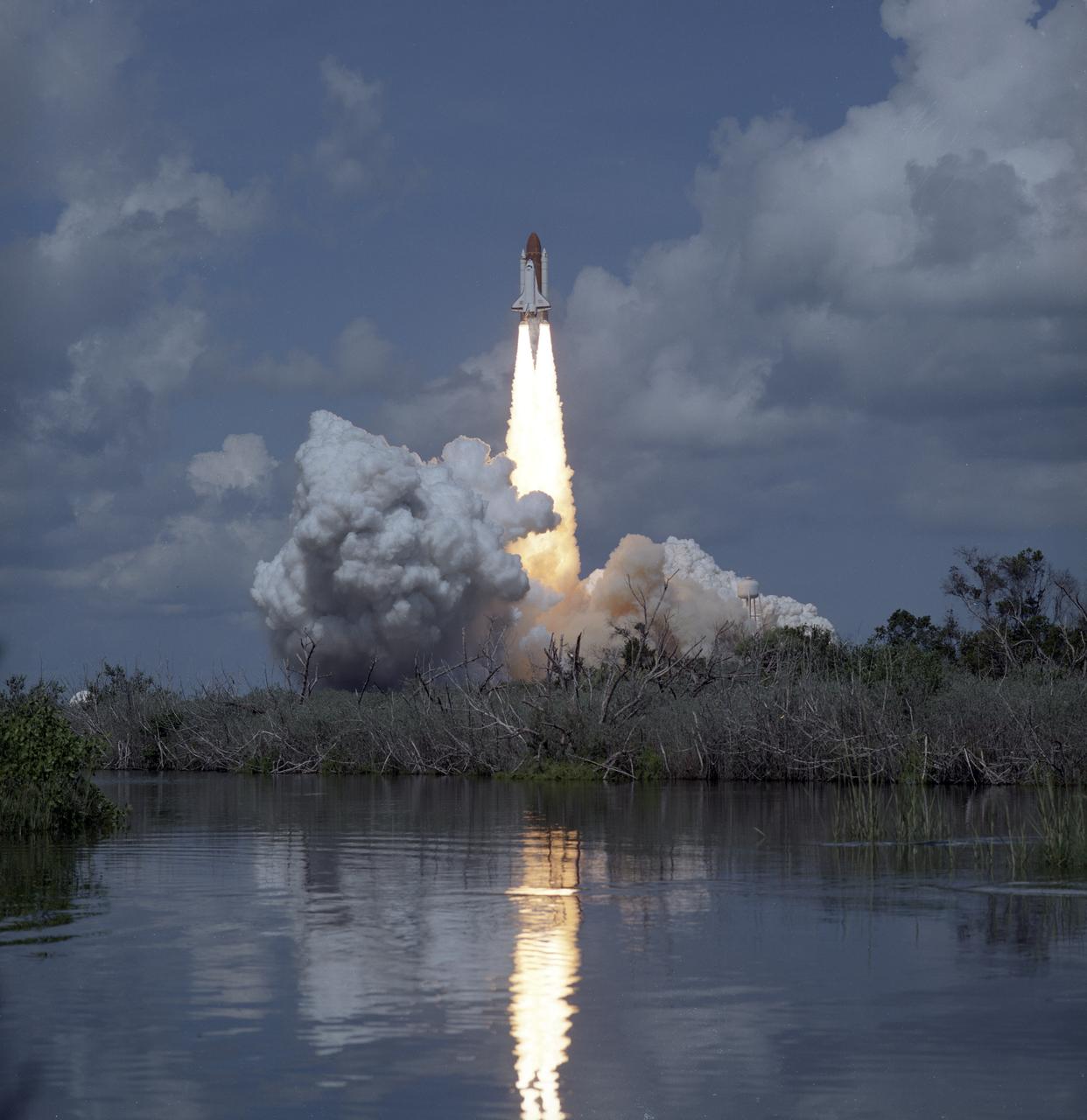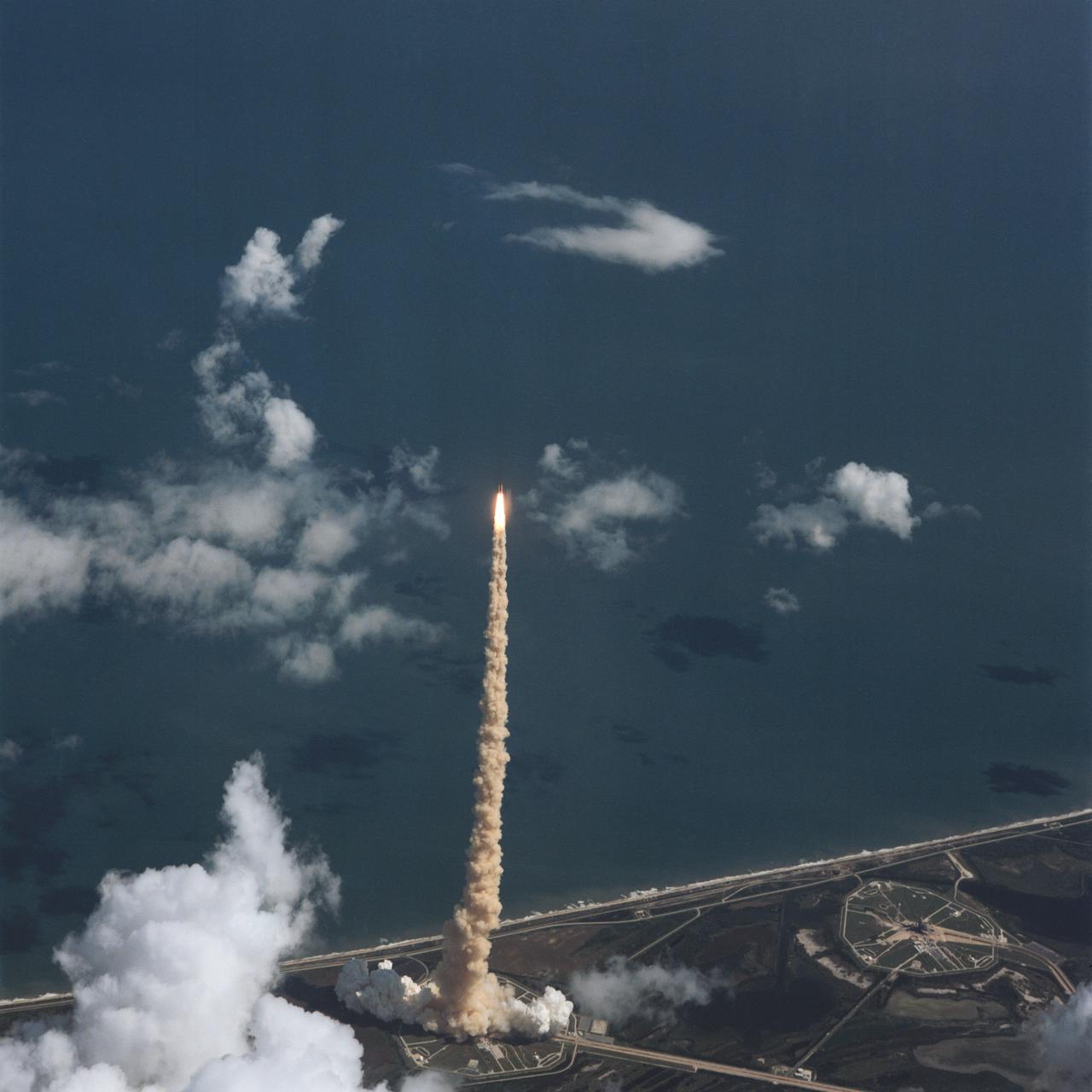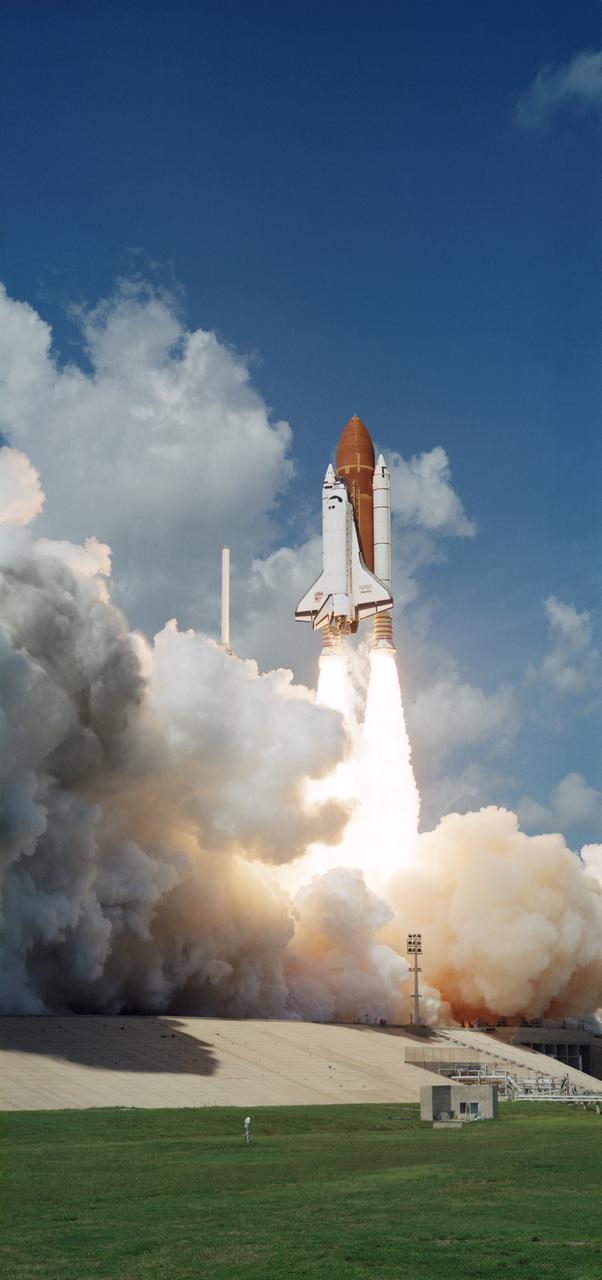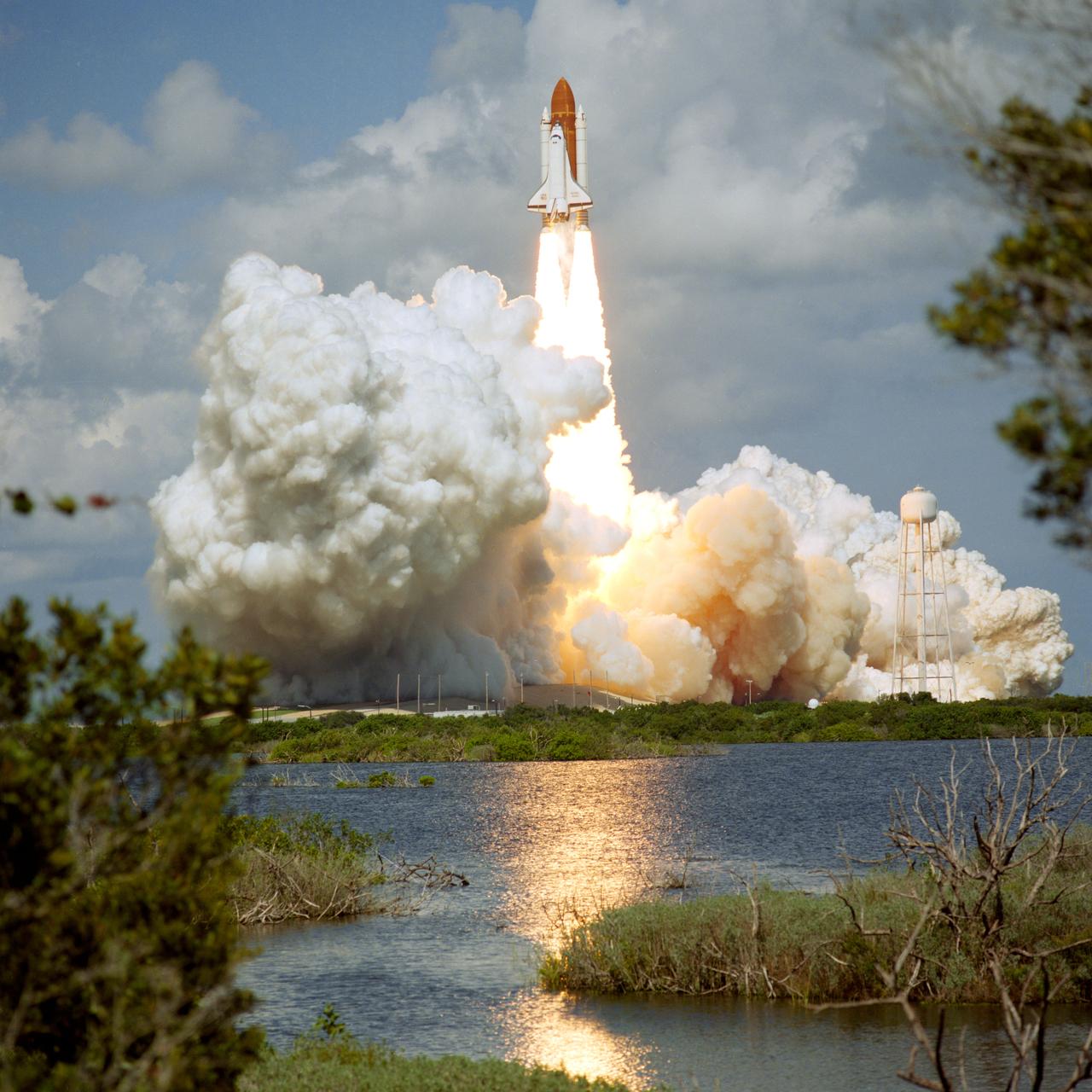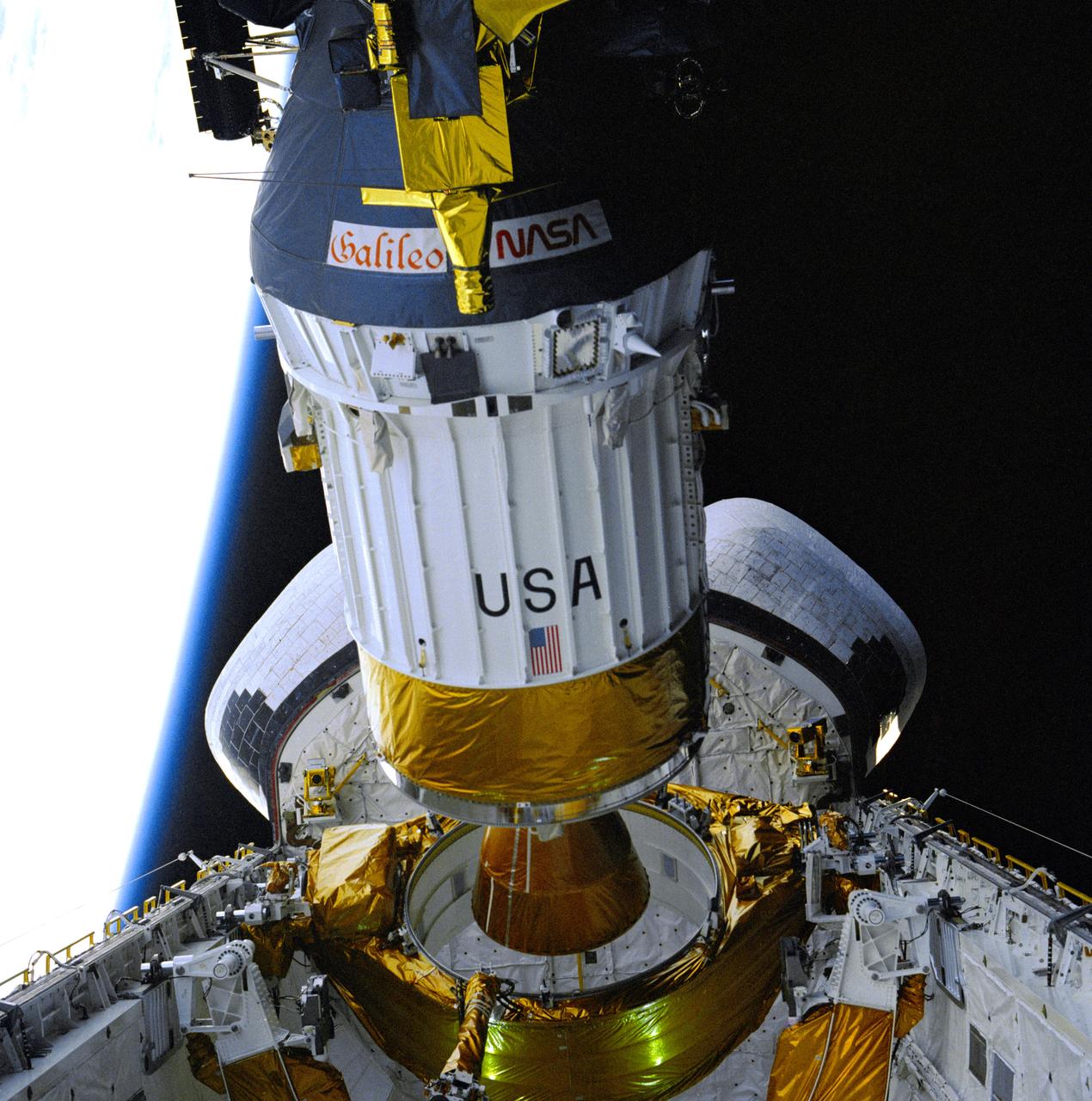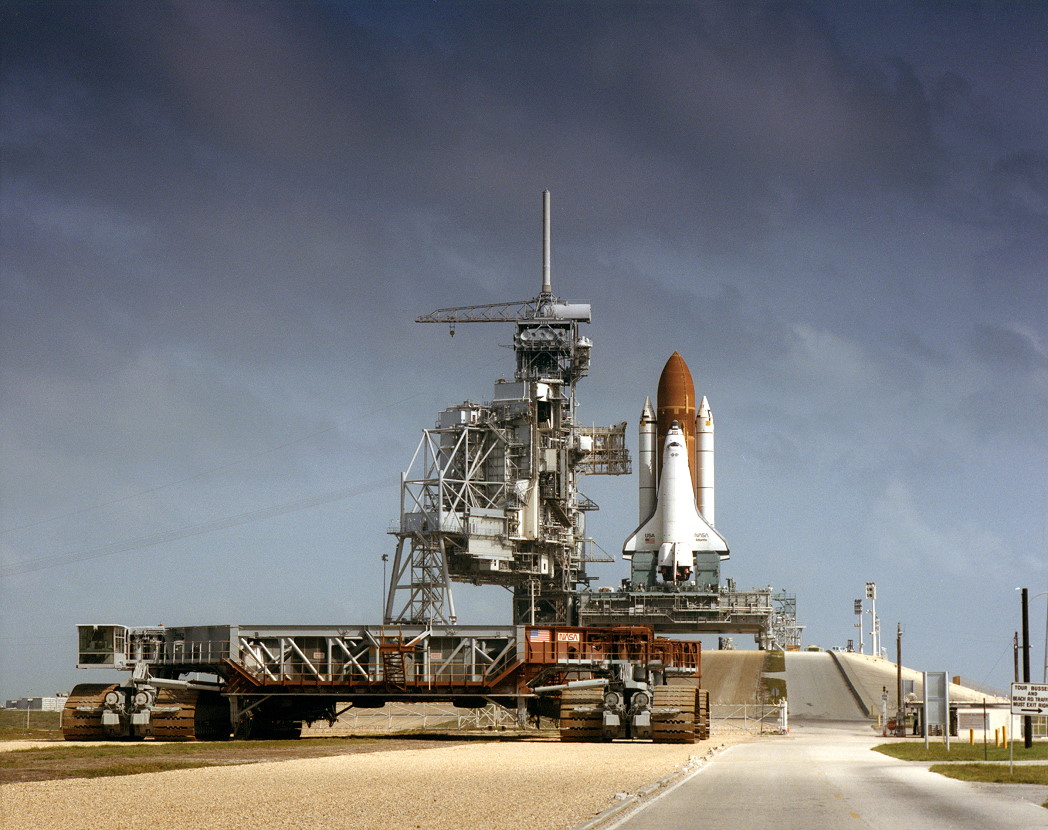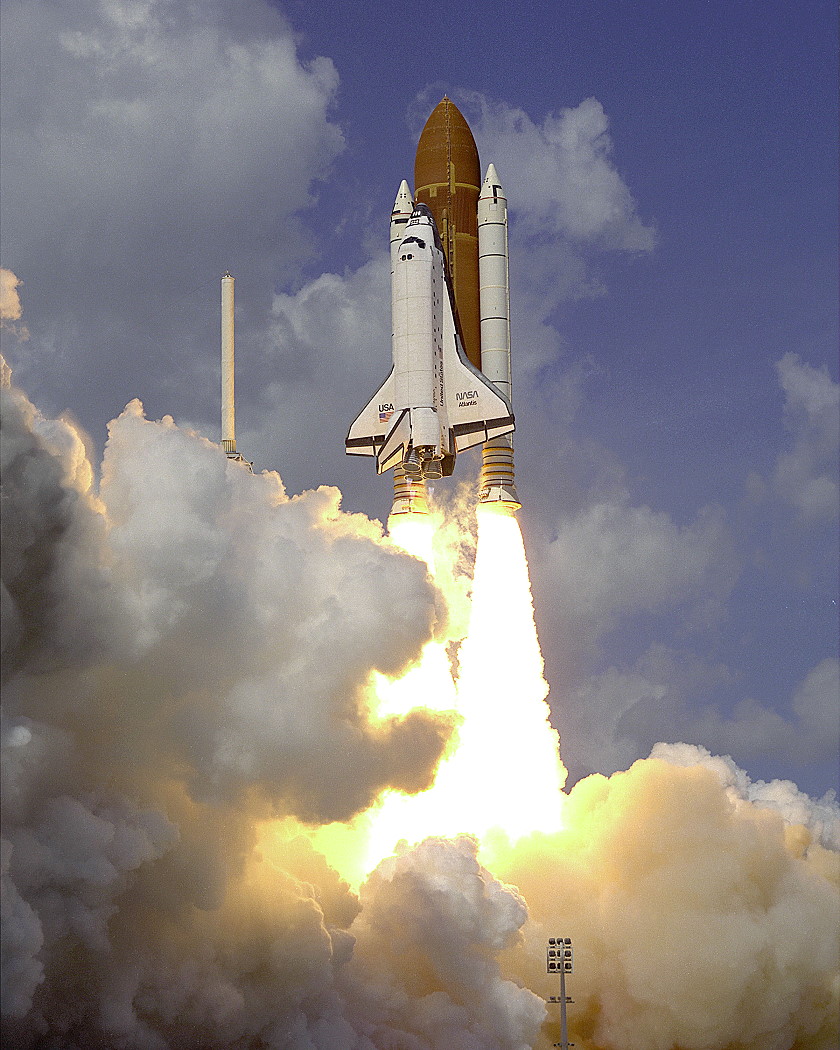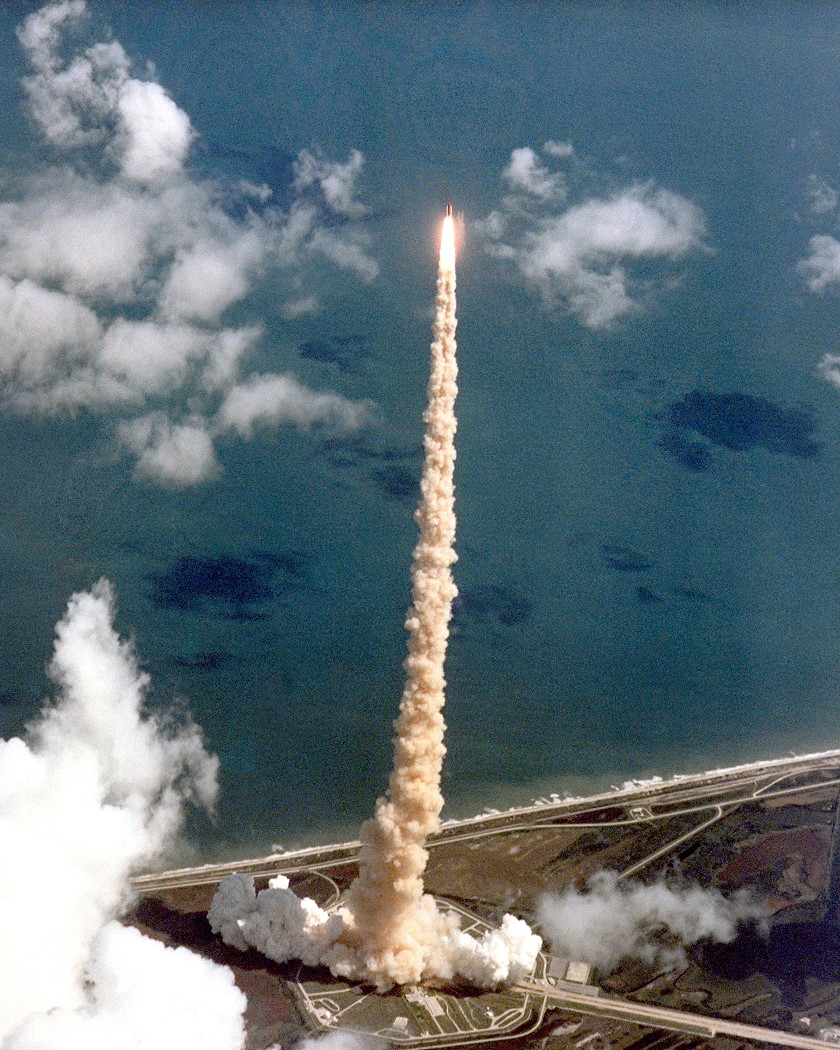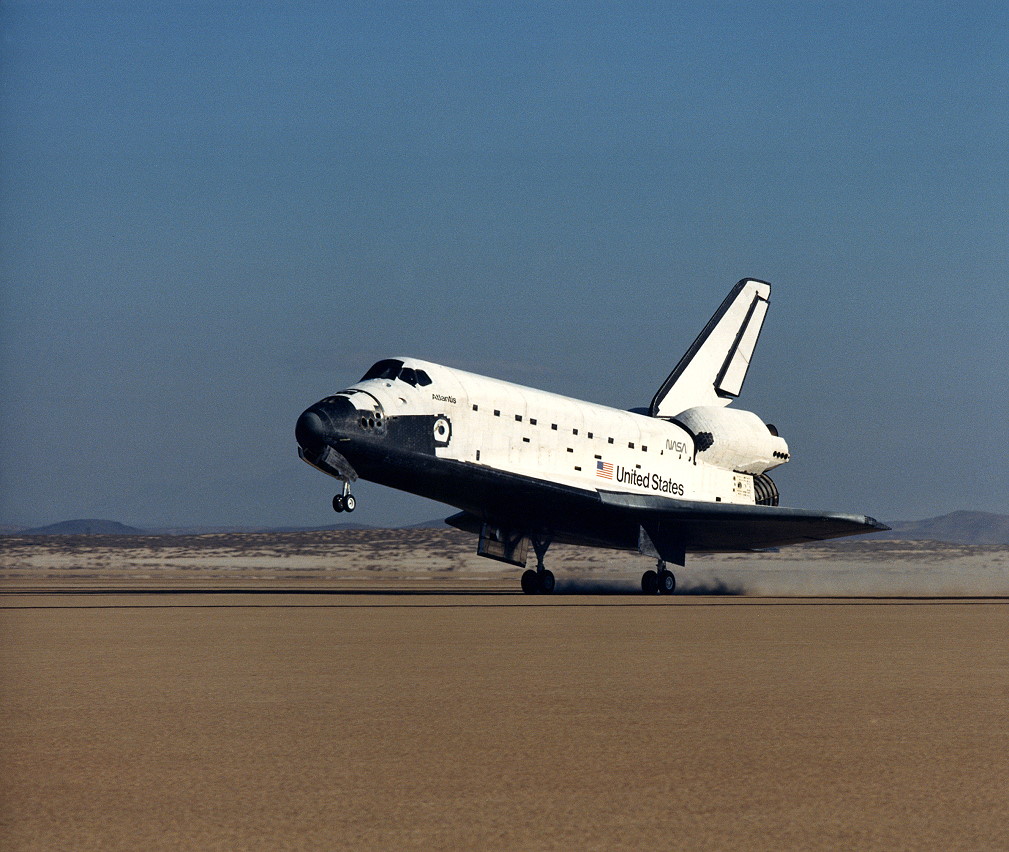STS-34 Fact Sheet
By Cliff Lethbridge

STS-34 — Atlantis
31st Space Shuttle Mission
5th Flight of Atlantis
Crew:
Donald E. Williams, Commander
Michael J. McCulley, Pilot
Ellen S. Baker, Mission Specialist
Franklin R. Chang-Diaz, Mission Specialist
Shannon W. Lucid, Mission Specialist
Orbiter Preparations:
Tow to Orbiter Processing Facility – May 16, 1989
Rollover to Vehicle Assembly Building – August 21, 1989
Rollout to Launch Pad 39B – August 29, 1989
Launch:
October 18, 1989 – 12:53:40 p.m. EDT. Launch attempt on October 12, 1989 was delayed due to a faulty main engine controller on Main Engine Number Two.
Launch attempt on October 17, 1989 was scrubbed due to poor weather at the Shuttle’s Kennedy Space Center emergency landing runway. October 18 launch occurred as scheduled with no delays.
Landing:
October 23, 1989 – 9:33:01 a.m. PDT at Runway 23, Edwards Air Force Base, California. Rollout distance was 9,677 feet. Rollout time was 60 seconds. Mission duration was 4 days, 23 hours, 39 minutes, 21 seconds. Landing occurred during the 80th orbit.
Mission Summary:
The primary payload was the Galileo/Jupiter spacecraft in the second planetary mission in the Shuttle program. Galileo was fired on a six-year journey to Jupiter by an Inertial Upper Stage (IUS) booster.
Galileo made its historic rendezvous with Jupiter in December of 1995, dropping a small probe into the planet’s atmosphere and providing a wealth of scientific data.
Secondary payloads included the Shuttle Solar Backscatter Ultraviolet (SSBUV) experiment, Growth Hormone Crystal Distribution (GHCD), Polymer Morphology (PM), Sensor Technology Experiment (STEX), Mesoscale Lightning Experiment (MLE), IMAX camera system, one SSIP experiment and Air Force Maui Optical Site (AMOS) experiment.
SELECTED NASA PHOTOS FROM STS-34
